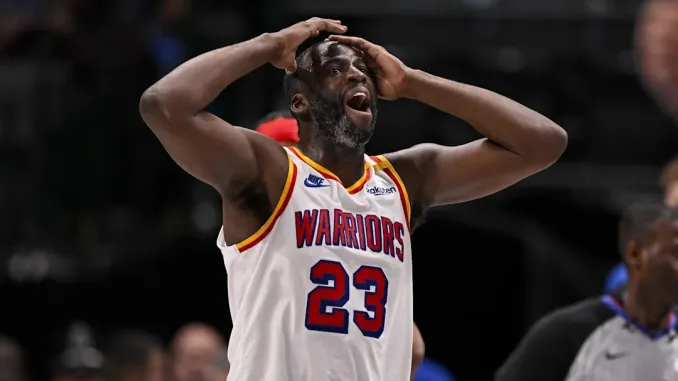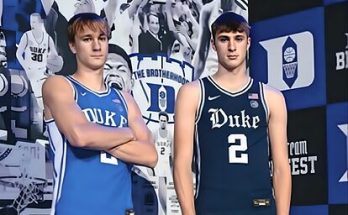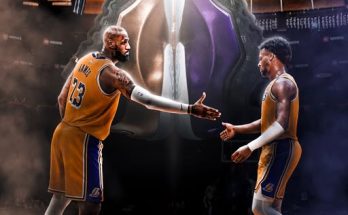In the ever-evolving landscape of the NBA, discussions about the league’s direction, player development, and event formats are commonplace. Recently, a notable discourse emerged between Golden State Warriors’ veteran Draymond Green and New Orleans Pelicans’ rising star Trey Murphy III. The crux of their debate centers on the NBA’s new All-Star Game format, which has sparked varied reactions from players and analysts alike.
Draymond Green’s Critique of the New All-Star Format
Draymond Green, known for his candidness both on and off the court, did not mince words regarding the NBA’s revamped All-Star Game format. The league introduced a mini-tournament structure featuring four teams of eight players each, with games played until one team scores 40 points. This format also includes a team of first and second-year players who excelled in the Rising Stars Challenge, granting them a spot in the main All-Star event.
During a TNT broadcast, Green expressed his dissatisfaction, stating, “This sucks, it ain’t basketball.” He elaborated on his concerns, emphasizing that the inclusion of young players who haven’t yet proven themselves over a regular season diminishes the prestige of the All-Star Game. Green argued that the event should honor those who have consistently demonstrated excellence, rather than integrating players based on potential or short-term performances.
Green’s primary contention is that the new format undermines the accomplishments of established players. He highlighted individuals like Shai Gilgeous-Alexander and Victor Wembanyama, suggesting that their hard-earned All-Star status is devalued when juxtaposed with less experienced players. Green’s perspective is rooted in a traditionalist view, where the All-Star Game serves as a pinnacle for seasoned talent, reflecting years of dedication and performance.
Trey Murphy III’s Perspective
Contrasting Green’s viewpoint, Trey Murphy III offered a fresh perspective on the matter. As a young player who has recently made significant strides in the league, Murphy sees the new format as an opportunity rather than a detraction. He believes that integrating rising stars into the All-Star Game provides them with invaluable experience and exposure, which can accelerate their development and confidence.
Murphy’s stance is that the NBA is evolving, and with it, the platforms that showcase talent should adapt. He argues that the infusion of young talent brings a new level of excitement and unpredictability to the game, which can enhance fan engagement. Moreover, Murphy suggests that established players can serve as mentors during these events, fostering a sense of camaraderie and growth within the league.
While Murphy acknowledges the importance of honoring veteran players’ achievements, he believes that the All-Star Game can serve a dual purpose: celebrating established stars while nurturing the next generation. This inclusive approach, according to Murphy, reflects the league’s commitment to growth and adaptation in a rapidly changing sports environment.
Broader Implications and Reactions
The debate between Green and Murphy has ignited discussions among fans, analysts, and other players. Some align with Green’s traditionalist view, emphasizing the importance of preserving the All-Star Game’s exclusivity for seasoned performers. They argue that the game should remain a testament to sustained excellence, and altering its format could dilute its significance.
Others resonate with Murphy’s progressive outlook, viewing the inclusion of rising stars as a necessary evolution. They contend that the NBA thrives on innovation and adaptability, and integrating young talent can rejuvenate interest and broaden the game’s appeal. This perspective suggests that the league’s future depends on its ability to embrace change and provide platforms for emerging players.
Notably, NBA legend Charles Barkley weighed in on the discussion, offering a nuanced perspective. While he understands Green’s concerns, Barkley also recognizes the potential benefits of the new format. He suggests that a balance can be struck, where the All-Star Game honors both established stars and showcases emerging talent, ensuring the event remains prestigious while also forward-looking.
The discourse between Draymond Green and Trey Murphy III encapsulates a broader conversation about tradition versus innovation within the NBA. As the league continues to evolve, it faces the challenge of honoring its storied history while embracing change to remain relevant and engaging. The All-Star Game, as a flagship event, serves as a microcosm of this dynamic, reflecting the tensions and possibilities inherent in balancing respect for the past with enthusiasm for the future.
Ultimately, the NBA’s ability to navigate these discussions and implement formats that celebrate both its heritage and its burgeoning talent will determine its trajectory in the years to come. The perspectives of players like Green and Murphy are invaluable in this process, offering insights that can guide the league toward decisions that honor its legacy while fostering growth and inclusivity.
The Role of All-Star Games in NBA Culture
The debate between Green and Murphy III is not just about a single game format—it highlights a larger philosophical divide about what the All-Star Game should represent. Traditionally, the All-Star Game has been a celebration of the league’s most elite players, a way to honor their hard work and skill in front of millions of fans. However, the NBA has always experimented with different formats, from changes in team selection to adjustments in gameplay style.
The modern NBA is more focused on entertainment, fan engagement, and long-term brand building. The introduction of younger players into the All-Star format aligns with the league’s strategy to promote future stars and keep the audience engaged. Murphy III’s perspective aligns with this new vision, advocating for an inclusive approach that embraces change while still respecting the past.
Draymond Green’s stance, however, reflects the old-school mentality, where the All-Star Game is earned through years of dominance and not given as an opportunity for growth. His frustration stems from the idea that the event is losing its exclusivity, something many veteran players feel strongly about.
Fan and Media Reactions
The reaction from NBA fans and media personalities has been divided. Social media has been flooded with arguments from both sides, with some fans agreeing with Green that the All-Star Game is meant to be a recognition of excellence, while others, like Murphy, welcome the excitement that young talent brings to the event.
Some former NBA players have chimed in as well. Shaquille O’Neal, for example, has expressed support for Green’s viewpoint, stating that “All-Stars are supposed to be the best of the best, not just anybody who can put up numbers for a few weeks.” Meanwhile, players like Jalen Rose have argued that the NBA must continue evolving, and part of that evolution includes allowing rising stars to participate in the All-Star festivities in new and creative ways.
Even within the current NBA, players have mixed reactions. Superstars like Kevin Durant and LeBron James have yet to publicly comment, but sources close to the league suggest that some veteran players feel similarly to Green. On the other hand, younger players who may benefit from the new format, such as Jalen Green and Scoot Henderson, have expressed excitement about the potential opportunities it creates for them.
The Business Side of the Debate
Beyond the competition itself, there is a business aspect to consider. The NBA’s All-Star Weekend is one of the most marketable and profitable events on the calendar. The league constantly looks for ways to boost viewership, attract younger audiences, and create viral moments on social media.
The inclusion of younger players can be seen as a marketing strategy—introducing new faces to casual fans and giving them a chance to shine on a national stage. This could increase jersey sales, sponsorship deals, and overall engagement with the league’s future stars.
However, if longtime NBA fans feel alienated by the changes, it could have the opposite effect. The league must strike a balance between innovating for the future and maintaining its deep-rooted traditions that have defined the All-Star Game for decades.
Could a Middle Ground Exist?
A potential solution to this debate could be a hybrid format that addresses both sides’ concerns. Instead of blending young and veteran players in the main All-Star Game, the NBA could create an additional event within All-Star Weekend, where top-performing rookies and sophomores face off against each other in a high-stakes competition.
One idea could be expanding the Rising Stars Challenge and adding a new reward system that allows standout performers to play alongside veterans in the main event based on their Rising Stars performance. This would create a merit-based system while still allowing young players to participate.
Alternatively, the NBA could introduce a “Legends vs. Future Stars” exhibition, where veteran All-Stars and young rising stars compete in a structured, yet entertaining, game format. This could allow for mentorship, high-level competition, and fan engagement all in one.
The clash of perspectives between Trey Murphy III and Draymond Green showcases the generational shift happening within the NBA. While Green represents the traditional, hard-earned path to All-Star status, Murphy embraces the idea of change, innovation, and opportunities for young players.
Both sides bring valid points, and the NBA will have to carefully consider how to evolve the All-Star Game without alienating its core audience. Whether the league sticks with the new format, modifies it, or reverts to a more traditional style, one thing is clear: the conversation around the All-Star Game is far from over.
As the NBA continues to grow globally, balancing entertainment with competition remains a critical challenge. Players like Green and Murphy, despite their differences, ultimately want the same thing—a league that thrives, respects its history, and remains the best basketball product in the world.
The coming seasons will determine whether the new All-Star format is a fleeting experiment or the beginning of a new era. Either way, the voices of players, fans, and analysts will continue shaping the game we love.



